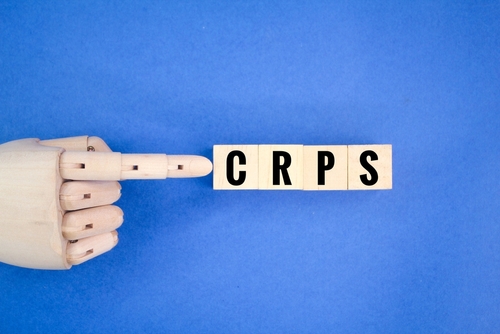Risk Factors for Complex Regional Pain Syndrome (CRPS) in Patients with Hand Trauma
Filed under Reviews
Hand Trauma and CRPS in patients attending Hand Therapy
By Tristany Hightower
Savaş, S., İnal, E. E., Yavuz, D. D., Uslusoy, F., Altuntaş, S. H., & Aydın, M. A. (2018). Risk factors for complex regional pain syndrome in patients with surgically treated traumatic injuries attending hand therapy. Journal of Hand Therapy, 31(2), 250–254. https://doi.org/10.1016/j.jht.2017.03.007
The Skinny
This study investigated the risk factors for CRPS after hand trauma that required surgical intervention.

In the Weeds
Patients who sustained a hand trauma were evaluated at three days postoperatively and throughout three months of hand therapy to evaluate for symptoms of complex regional pain syndrome (CRPS). The following criteria was gathered.
- Age
- Sex
- Work Status (manual labor vs. non-manual)
- Pain level at three days post-op
- Injury type (Crush injury, cut laceration injury, blunt trauma)
The pain was measured using the Pain Numerical Rating Scale (PNRS).
Patients presenting with CRPS symptoms (using Harden et al. 2007) throughout the 3-month period were referred to another medical professional for evaluation/diagnosis of CRPS.
Bringing it Home
68 of the 260 patients were diagnosed with CRPS. Over half of those diagnosed with CRPS were diagnosed in the second month of rehabilitation. Age, sex, and work status were not significant risk factors for CRPS. A score of >5 on PRNS at 3 days post-surgery was a risk factor for CRPS. Crush injuries were also a risk factor for CRPS (4.7x more likely to develop CRPS). Postoperative pain and type of injury should be carefully investigated in hand therapy practice to identify early signs and potential risk factors for developing CRPS.
Rating: 3 out of 5
In contrast to other studies on CRPS, this study found that being female was not a risk factor for CRPS. These results could have been impacted by the number of males in the study compared to females (n=210 vs. n=50). This is a threat to external validity, impacting the generalizability of the results. Also, due to the complex nature of CRPS, diagnostic criteria can vary between studies/medical providers. This makes the results in this study only generalizable to other studies that utilized the same diagnostic criteria.
More To Read
Splinting Options for Stiff Finger Joints
Following an injury to the proximal interphalangeal joint, there is often a loss of range of motion, typically in both the flexion and extension planes. Therefore, we have compiled a list of helpful splinting options for stiff finger joints. To Improve PIP Joint Flexion Flexion Wrap with Elastic Tape (Coban): This is a very easy…
Read MoreTitle: Understanding De Quervain’s Pathology: A Comprehensive Exploration of Special Tests
Understanding De Quervain’s Pathology: A Comprehensive Exploration of Special Tests By: Miranda Materi De Quervain’s and Special Tests De Quervain’s tenosynovitis is a condition characterized by inflammation of the tendons on the thumb side of the wrist, causing pain and discomfort. These tendons include Abductor Pollicis Longus (APL) and Extensor Pollicis Brevis as they pass through…
Read MoreBrachial Plexopathy Case Example in Hand Therapy
Brachial Plexopathy Case Example in Hand Therapy (plexopathy examples) One of the recent cases we have seen is a 13-year old with a brachial plexus injury. We are seeing the patient post-surgery for tendon transfers to increase functional use of his left upper extremity (LUE). Before the surgery, he could not extend the wrist and…
Read MoreWhich orthosis design is better for zone 5-6 extensor tendon injuries, a relative motion orthosis compared to a dynamic extension orthosis?
M. Buhler, ˝ D. Gwynne-Jones, M. Chin et al., (2023) Are the outcomes of relative motion extension orthoses noninferior and cost-effective compared with dynamic extension orthoses for management of zones V-VI finger extensor tendon repairs: A randomizedcontrolledtrialJournalofHandTherapy. The Skinny: The aim of this study was to compare the data for two different types of orthoses…
Read MoreSign-up to Get Updates Straight to Your Inbox!
Sign up with us and we will send you regular blog posts on everything hand therapy, notices every time we upload new videos and tutorials, along with handout, protocols, and other useful information.






